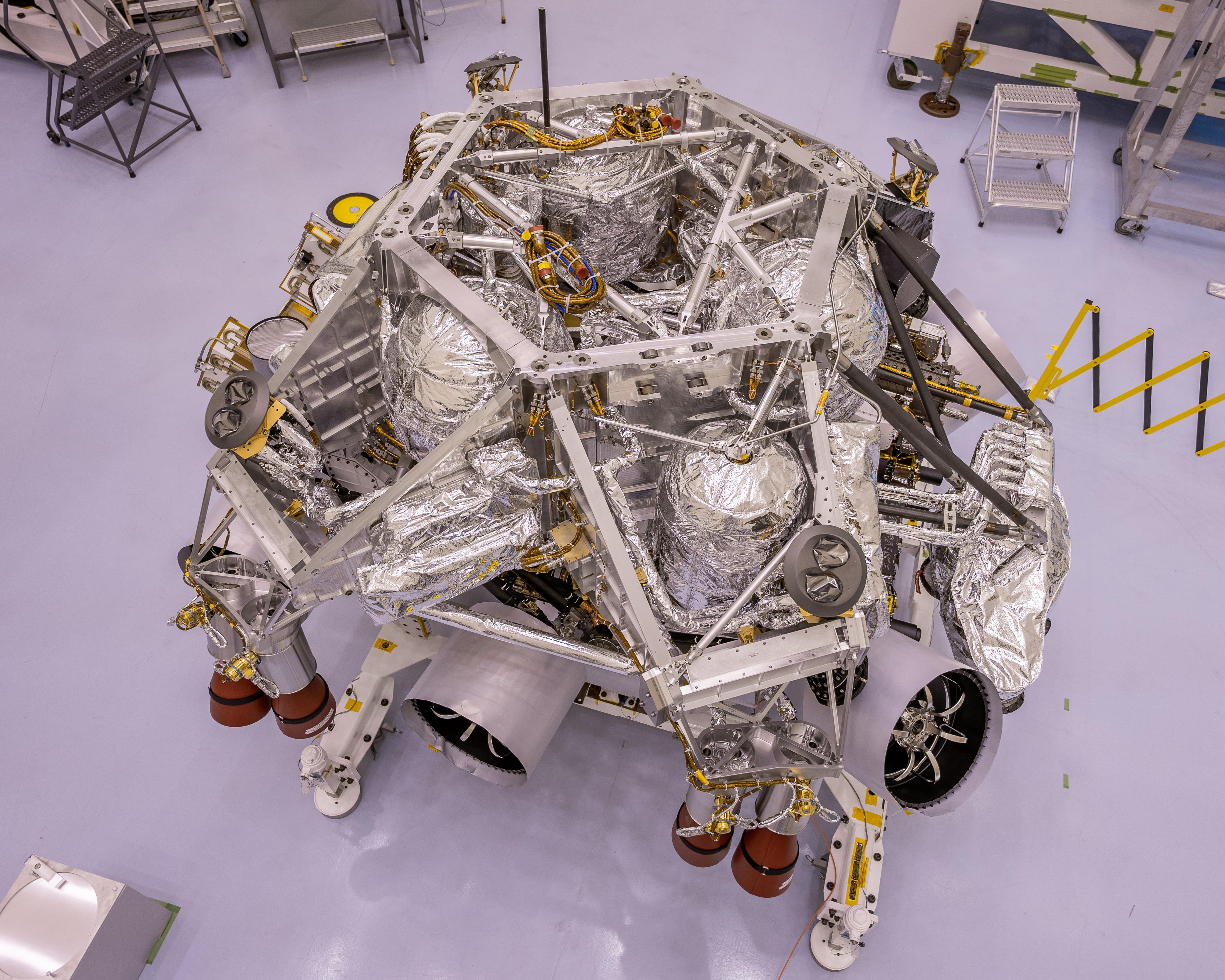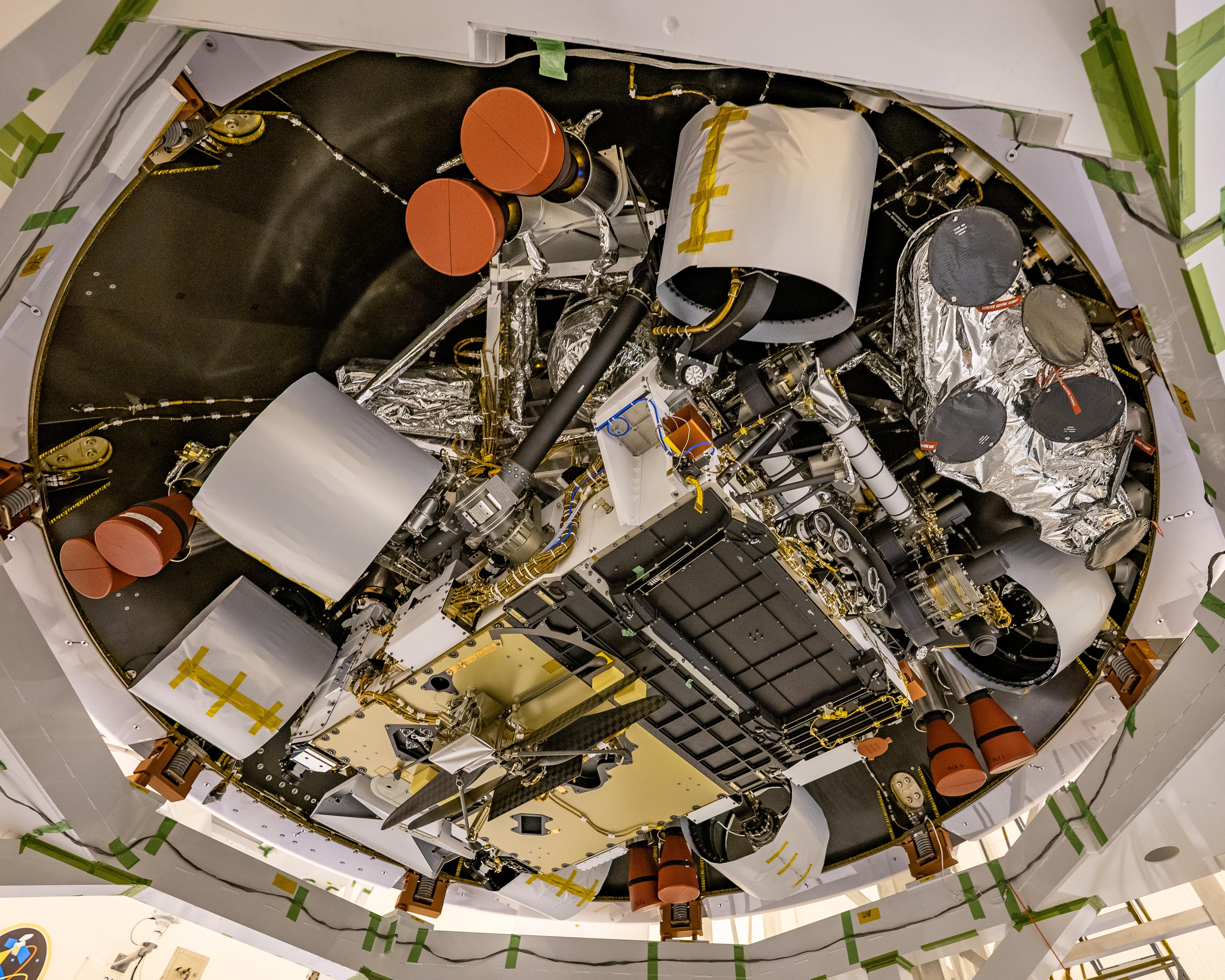
NASA continues to gear up for the launch of its next Mars rover, which is now just over two months away.
Engineers at NASA's Kennedy Space Center in Florida have begun stacking the Perseverance Mars rover and its associated hardware in the right configuration for liftoff, which will occur during a three-week window that opens on July 17.
The stacking process began on April 23, NASA officials said. On that day, the car-size rover was integrated with its "sky crane" descent stage, which will lower Perseverance to the Martian surface on cables. (This sci-fi-seeming strategy already has one successful touchdown under its belt — the landing of Perseverance's predecessor, the Mars rover Curiosity, in August 2012.)
Related: NASA's Mars 2020 rover Perseverance in pictures

"Attaching the rover to the descent stage is a major milestone for the team because these are the first spacecraft components to come together for launch, and they will be the last to separate when we reach Mars," David Gruel, the Perseverance rover assembly, test, and launch operations manager at NASA's Jet Propulsion Laboratory (JPL) in Pasadena, California, said in a statement.
"These two assemblies will remain firmly nestled together until they are about 65 feet [20 meters] over the surface of Mars," Gruel added.
Another big stacking milestone came on April 29, when the rover-sky crane duo was attached to the back shell. This conical structure contains the mission's parachute system and helps protect spacecraft hardware during the mission's brief, fiery trip through the Martian atmosphere. (The mission's heat shield will also play a key protective role, of course.)
Get the Space.com Newsletter
Breaking space news, the latest updates on rocket launches, skywatching events and more!
Perseverance will land inside Mars' 28-mile-wide (45 kilometers) Jezero Crater in February 2021. The rover will do a variety of science work in this locale, which harbored a lake and a river delta in the ancient past.
For example, Percy will hunt for signs of ancient Mars life, characterize the region's geology and collect and cache samples for future return to Earth, among other tasks.
The mission's science team has already started practicing for these various operations. In February, for instance, seven team members trekked out to a dry lakebed in Nevada with instruments similar to those that Percy carries.
The researchers practiced gathering data after receiving instructions from other mission team members spread around the world, simulating the processes by which Percy will be directed to explore the Red Planet.
Such dry runs are "especially important for scientists who are new to Mars rovers," field team leader Raymond Francis, also of JPL, said in a different statement. "It's a team effort, and everyone has to learn how their roles fit into the whole mission."
- Mars 2020: The Red Planet's next rover
- Meet 'Perseverance': NASA's Mars 2020 rover has a new name
- Photos: Ancient Mars lake could have supported life
Mike Wall is the author of "Out There" (Grand Central Publishing, 2018; illustrated by Karl Tate), a book about the search for alien life. Follow him on Twitter @michaeldwall. Follow us on Twitter @Spacedotcom or Facebook.
OFFER: Save 45% on 'All About Space' 'How it Works' and 'All About History'!
For a limited time, you can take out a digital subscription to any of our best-selling science magazines for just $2.38 per month, or 45% off the standard price for the first three months.
Join our Space Forums to keep talking space on the latest missions, night sky and more! And if you have a news tip, correction or comment, let us know at: community@space.com.

Michael Wall is a Senior Space Writer with Space.com and joined the team in 2010. He primarily covers exoplanets, spaceflight and military space, but has been known to dabble in the space art beat. His book about the search for alien life, "Out There," was published on Nov. 13, 2018. Before becoming a science writer, Michael worked as a herpetologist and wildlife biologist. He has a Ph.D. in evolutionary biology from the University of Sydney, Australia, a bachelor's degree from the University of Arizona, and a graduate certificate in science writing from the University of California, Santa Cruz. To find out what his latest project is, you can follow Michael on Twitter.










